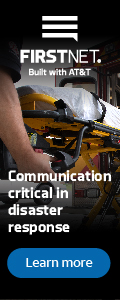New Survey Finds Volunteer Fire Departments Have Been Adversely Impacted by Inflation
September 20, 2022
In August, the National Volunteer Fire Council (NVFC) conducted a survey to determine the impact that high gas prices and inflation are having on local volunteer emergency service organizations. In total, 608 respondents completed the survey. The following provides an overview of the survey results.
Respondents
The majority of respondents were fire chiefs (40.36%), followed by officers (16.47%), firefighters (14%) and firefighter/EMS (13.51%). They represented every U.S. state except for Hawaii. Most were from all volunteer departments (71.5%), followed by mostly volunteer (23.56%). Few were from mostly career departments (4.61%) or all career departments (0.33%). Fifty-seven percent of the departments represented provide both fire and EMS, 37% provide only fire services, and about 1% provide only EMS. About 90% of respondents were with departments located in communities serving populations under 25,000.
Impact
The overwhelming majority of respondents (86.07%) said that their department has been adversely impacted by inflation and high gas prices. The biggest areas where they reported seeing an impact were as follows:
- Manufacturer has notified department or agency that there will be a significant delay in the delivery of gear, equipment, or apparatus that has been ordered (56.58%).
- Volunteers are hesitant or unwilling to respond due to increased cost of commuting to the station (49.62%).
- Department is not able to purchase the full amount of equipment, gear, and/or apparatus it had planned to purchase in 2022 due to the increase in price exceeding the planned budget for these purchases (45.11%).
- Department has seen a decline in community donations in 2022 compared with previous years (39.66%).
- Recruitment numbers are down due to the impact inflation and/or high gas prices have had on potential recruits (37.59%).
- Low morale among volunteers (36.09%).
- Volunteers have expressed or demonstrated increased stress or mental health concerns (31.77%).
- Manufacturer has charged the department or agency an extra “surcharge” on apparatus or equipment that had previously been ordered but not yet received (25.38%).
Despite the impacts, 54% of respondents reported that their department has not done anything yet to address the issues of inflation and high gas prices. For those that have, the top responses were:
- Department is working with local government to obtain additional funding or assistance (26.09%).
- Department has changed or modified its fundraising activities to ones that utilize less gas and resources (10.96%).
- Department has joined with other local or regional departments/agencies to purchase equipment and share resources (9.57%).
What Could Help
Respondents were asked what benefit, resource, or action would most help their fire department in countering the impacts of inflation and high gas prices. The top responses were as follows:
- Increased federal grant opportunities to help volunteer emergency service departments secure necessities (63.64%).
- A percentage of the gas tax being allocated to volunteer emergency service departments (59%).
- Suspension of state and/or federal gas tax for volunteer emergency service departments (58.11%).
- Corporate discounts for volunteer responders on products and services they use in their home life (45.63%).
- Cooperative buying agreements with negotiated lower rates for equipment, gear, and technology (41.53%).
- Gear and equipment donation programs (41.53%).
The NVFC thanks everyone who responded to the survey and provided their feedback. The responses will assist the NVFC in communicating department needs when advocating for the volunteer fire and emergency services as well as developing resources and training to address department needs.



